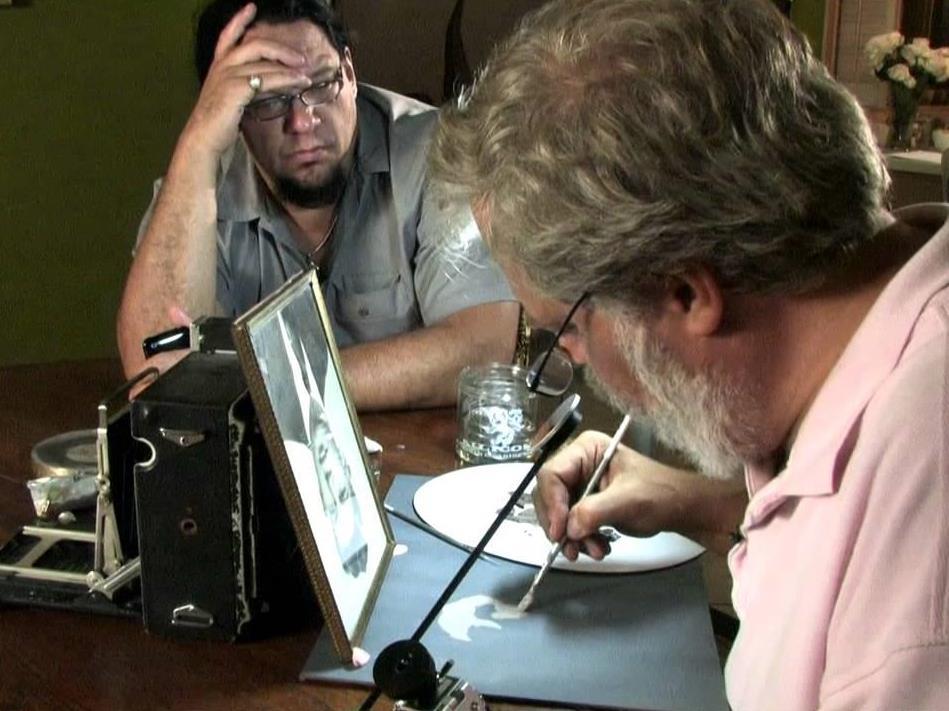The title of Tim’s Vermeer immediately inspires an obvious line of questioning: how can the titular Tim Jenison make his own painting in the style of renowned Dutch artist Johannes Vermeer? The former is a billionaire, inventor, and animation whiz; the latter is a figure considered by many as the greatest to ever wield a brush. That one can beget the other almost defies logic – and, indeed, it is the inherent impossibility of creating a work to Vermeer’s standard that drives the documentary.
Like many others, Jenison has pondered the seemingly flawless nature of Vermeer’s output, specifically his mastery of light within his images. Many of the painter’s works look more like photographs than oil on canvas, a common observation that has puzzled art scholars for centuries. Vermeer’s lack of formal training is similarly perplexing, as is the absence of preliminary sketching underneath his images, a technique otherwise in widespread practise. Inspired by the books of David Hockney and Professor Philip Steadman, Jenison endeavours to ascertain how Vermeer so vastly exceeded the efforts of his peers – and the many who have attempted to follow in his footsteps since – to create his masterpieces.
Vermeer’s ‘The Music Lesson’ becomes the focus of Jenison’s enquiries – its visual composition, its many components, its setting and its detail included. Playing with methods of optical intervention available in the 17th century, he commits to painting his own version using everything the artist would have had at hand. Attempting to recreate the artwork can only occur after significant preparation, including research trips to Vermeer’s hometown of Delft and to Buckingham Palace to see the painting in the Royal Collection, and the construction of life-size replicas of every element contained within its frames. In its entirety, his quest consumed 1825 days, or 5 years.
To say that Jenison’s efforts are thorough is to undersell the intricacy ingrained in a passion project that became an unyielding obsession, with the act of becoming fixated the name of the feature’s game. It is to the film’s betterment that it captures the meticulousness with the same precision, visually cold but emotionally excited as it may be, first setting the scene with background information, then chronicling every step of the journey from theory to testing to finished product. The build-up is more engaging than it is educational beyond the surface level, fleshed out by interviews but always placing Jenison and his conclusions at the centre. The culmination, though often presented as montages reflecting the passage of time, is as tense as any edge-of-the-seat thriller.
In their first feature, magical duo Penn and Teller are the driving force behind the documentary, with Penn heard as the narrator, seen on screen as a guide and acting as executive producer, and Teller directing the action from behind the lens. Both may be best known as performers, but they make a convincing transition to telling a tale of others’ tricks; indeed, it is their well-honed understanding of perception and reality that drives the movie. Tim’s Vermeer, the eponymous artwork, is just that – a tangible illustration of how seeing is believing, as confined to the art realm with surprisingly crowd-pleasing aplomb. Tim’s Vermeer, the film, may labour its point, but it does so with a loving eye for understanding what drives the fascination with illusions in all their forms.
Rating: 3 ½ out of 5 stars
Tim’s Vermeer
Director: Teller
US, 2013, 80 mins
Sydney Film Festival
www.sff.org.au
4 – 15 June
In general release: July 3
Distributor: Sony
Classification: M
Actors:
Director:
Format:
Country:
Release:





